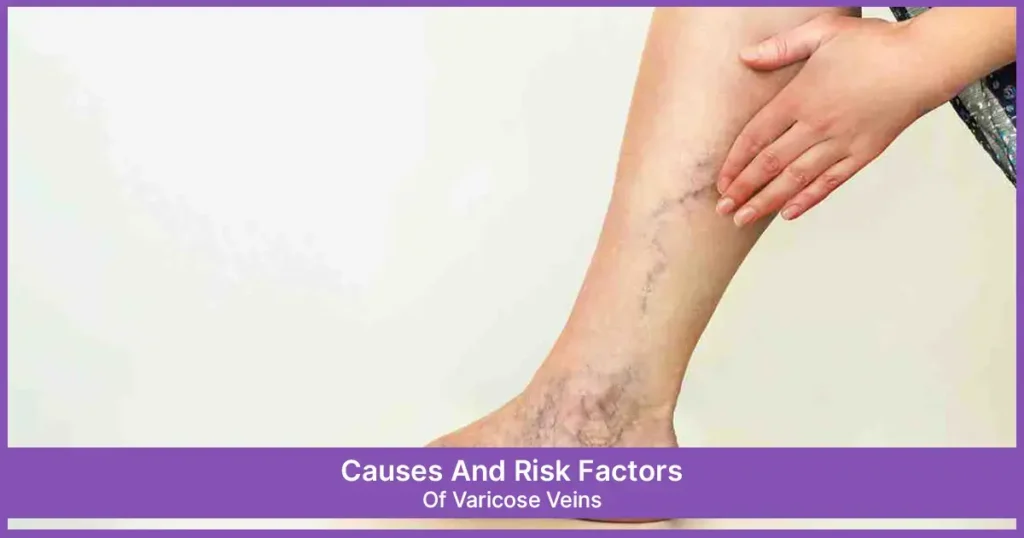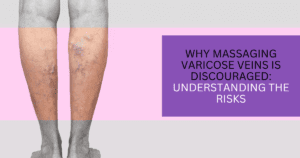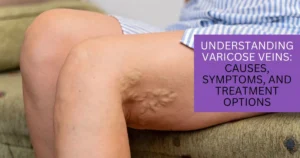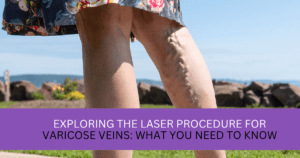Vascular problems are prevalent all over the world, and many people with varicose veins simply treat them as a cosmetic concern. They may cause aching and severe discomfort. If you remain in a standing position, you may be at a higher risk of developing varicose or spider veins. Varicose veins look like bulging blood vessels, often appearing in adults over 40. Having a sedentary lifestyle puts them at greater risk for varicose veins. According to the American Heart Association, almost 23% of US adults have a varicose vein problem. Let’s dive into this vascular condition to get the information about it for better treatment options.
A Brief Overview of Varicose Veins
Before you jump to the treatment methods, first understand varicose veins. They are dilated, winding veins, typically appearing in the legs. This vein disease occurs when one‑way valves fail to perform, allowing blood to pool in the lower limb instead of flowing back smoothly toward the heart. Imagine a faultline: when valves fail to function, blood flows backwards and accumulates. This abnormal flow causes stretching and distorting of the veins over time.
Why Varicose Veins Are a Global and Local Concern
One of the pressing questions is whether geography matters for the occurrence of varicose veins. The global prevalence of varicose veins varies significantly, ranging from approximately 2% to 73%, depending on demographics and geography. Prolonged standing and sedentary lifestyles contribute to this condition being a considerable public health concern.
What Causes Varicose Veins?
There are multiple causes of varicose veins. The weak walls of your veins cause them to occur. With the pressure of blood in your veins, the fragile walls allow your veins to get bigger. The valves in your veins stop working as they should once the vein stretches. This causes trouble as the blood pools in your veins.
Do you know what causes these vein walls and valves to become weak? Let’s explore several key reasons, including:
- Prolonged standing and sitting.
- Hormones.
- Normal aging
- Excess weight.
Know the Key Risk Factors
This section helps you unpack the common suspects behind varicose veins. Some are hard to combat, while others are possible to tackle head-on. Let’s explore the details.
3.1. Family Tree and Genetics
One’s family background can better tell reality than fortune‑tellers. If your parents or grandparents had a varicose vein problem, there’s a high risk you might too. Genetic predisposition hits hard. Not everyone faces this risk, but those with a genetic predisposition are more likely to face this condition.
3.2. Age
Time contributes to the wear and tear. It takes its toll. Aging significantly weakens the vein walls and valves. Blood begins to move backwards and veins swell.
3.3. Gender and Hormones Role
Overall, females have more varicose vein issues. Hormonal fluctuations, especially during pregnancy, menstruation, menopause, or from oral contraceptives, contribute to the relaxation of vein walls and varicosity.
3.4. Pregnancy
Pregnancy is a double‑whammy situation. It increases blood volume and pressure from the growing uterus, which weighs on leg veins, enhancing the risk of varicose veins. Good news? Many varicose veins that appear during pregnancy can fade automatically after childbirth.
3.5. More Weight
Extra pounds cause stress to the venous system, especially in the limbs. Obesity boosts intra‑abdominal pressure, obstructing blood return to the heart.
3.6. Standing or Sitting for Long Hours
Being glued to a seat for hours keeps blood from flowing backward, damaging valves. Standing on one’s feet for hours on end gives gravity free rein, as it pulls the blood down.
3.7. Sedentary Lifestyle
Less movement is a perfect recipe for pooling blood. Without sufficient muscular movements, circulation slows, slowly damaging the veins.
3.8. Lifestyle Habits
Smoking will reflect in poor vein health. Some other contributors include heavy alcohol use, chronic constipation, and leg trauma, further accentuating the situation.
Treatment Options: When Self‑Help Isn’t Enough
If lifestyle modifications don’t work, different cutting-edge varicose vein treatments can help you regain and retain your vascular health:
- Endovenous ablation (laser or radiofrequency): Heat is used to seal the faulty vein from within.
- Sclerotherapy: A solution is injected to collapse the vein. This is a seamless and non‑invasive procedure with minimal downtime.
- Compression Therapy procedure: This process continuously improves veins and stops recurrence.
What are the Preventive Measures?
Here’s how to deal with the varicose veins from spreading further:
5.1. Maintain Your Weight
Trimming fat reduces pressure on veins.
5.2. Keep Body in Movement
Keep walking, cycling, jogging, or swimming. Calf muscle movement acts like a stimulus, pushing blood upwards.
5.3. Switch It Up
Don’t stay in one position for too long. Every 30 minutes, follow the activity of standing, stretching, or walking around.
5.4. Wear Compression Stockings
These stockings may not win fashion contests, but they’re blessings in disguise. They balance circulation, reduce swelling, and stave off the progression of vein issues.
5.5. Elevate Legs
Elevating your feet a couple of times daily above heart level does wonders for smooth drainage.
5.6. Ensure a Healthy Diet
The intake of low‑salt and high-fiber diets cuts down on water retention and improves vascular health.
5.7. Say Goodbye to Smoking
If you are a smoker, breaking the habit is a great move for your vascular system and your overall health.
What Next?
Varicose veins are commonly found all over the world, but timely treatment will improve your health and lifestyle. In many cases, people can manage varicose veins with home remedies. These approaches include regular exercise, maintenance of a moderate weight, and avoiding a sedentary lifestyle. If you have varicose veins, book an appointment with a professional vein doctor to prevent complications down the line.
Read More: Understanding Varicose Veins Causes, Symptoms, And Treatment Options




